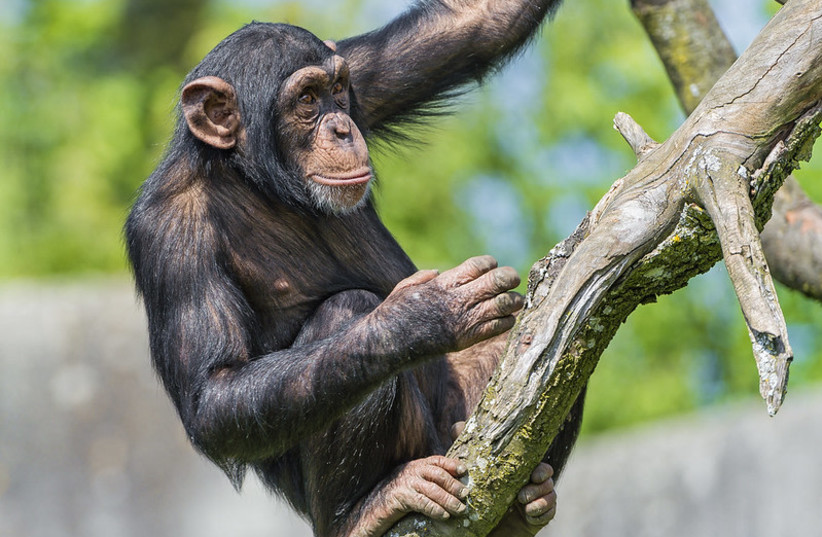Chimpanzees may be even more similar to humans than previously thought, with a new study shedding light on another behavior exhibited by the ape species that was once thought to be exclusive to mankind: Showing off objects to others for the sake of attention.
The study shows that it isn't just humans who engage in the social behavior of flexing, meaning to show off an object or an achievement for the sake of attention and clout. Rather, some of our closest evolutionary relatives may have their own way of getting social praise and approval.
The findings of this study were published in the peer-reviewed academic journal Proceedings of the National Academy of Sciences (PNAS).
Sharing is caring: Chimpanzees and humans flex their finds
From the age of just 10-13 months old, humans develop the ability to show off. This can be exhibited in a wide range of forms. Maybe they want to bring their parents a toy they have or show off a rock they found. Maybe they're pointing out how their sibling is sleeping. The point, however, is the same: Garnering attention for either themselves or the object/event they're indicating at, or maybe even both.
This is a basic human behavior and one that only further develops over time, and it is also known as "sharing for sharing's sake." There is no other reason to share or show off the object or event in question other than attention.


But what about other animals? Do chimpanzees, the great apes that are among the most closely related to homo sapiens, display something similar?
That seems to be the case.
Researchers at Kibale National Park in Uganda studied an example of this happening among the local Ngogo chimpanzee community.
Here, an adult female chimpanzee named Fiona was grooming her mother, a chimpanzee named Sutherland. But during this, Fiona was observed picking up a leaf and grooming it.
Sutherland, however, evidently couldn't be bothered with this at the time and was focusing on something else. As a result, after several seconds of grooming the leaf, Fiona repositioned herself and showed the leaf to Sutherland, holding it toward her. After Sutherland began looking, Fiona pulled it back and resumed grooming.
Leaf grooming, while not understood, isn't unheard of. It has been seen on occasion by chimpanzees during regular grooming.
But what is most significant about this exchange is that Fiona only held the leaf out until Sutherland noticed it. Once her mother had paid attention to it, Fiona went back to grooming it. What this likely means is that the only purpose of Fiona showing the leaf to Sutherland was for the sake of attention.
This was further supported by observing several other leaf grooming instances, ruling out other possibilities like showing the lead for food or something else.
Chimpanzees display human-like communicative behavior
As one of the closest evolutionary relatives to humans, chimpanzees are famous for their high level of intelligence and sociability.
For example, studies have shown that chimpanzees are able to practice a rudimentary form of medicine using crushed insects, treating both themselves and each other.
In addition, chimpanzees also use vocal communication to foster group cooperation - a trait that was key to humanity's development and success.
Chimpanzees are also capable of being territorial and have even been documented going to war.
The Gombe Chimpanzee War was a violent conflict between two communities of chimpanzees in Gombe Stream National Park in Tanzania between 1974 and 1978. The two groups were once unified in the Kasakela community but by 1974 the group started splintering into factions, as noted by Goodall.
Over a span of eight months, a group of chimpanzees consisting of six adult males, three adult females and their offspring, separated themselves into the southern area of Kasekela, leaving behind eight adult males, twelve adult females and their young.
During the four-year conflict that ensued, all the males in the southern community were killed, disbanding their faction. The victors then tried to expand their territory but were driven out by yet another faction of chimpanzees at a later date.
The fact that such conflict among chimpanzees is possible, despite war being long thought of as something exclusively human, is just another major highlight of the similarities between the two primate species.
And the fact that chimpanzees can even be so similar to humans as to also show off things for attention highlights this even further.
Shira Silkoff contributed to this report.
